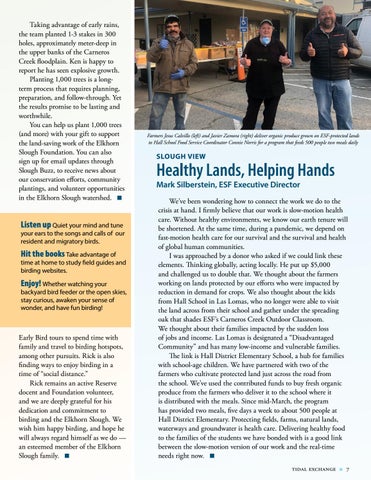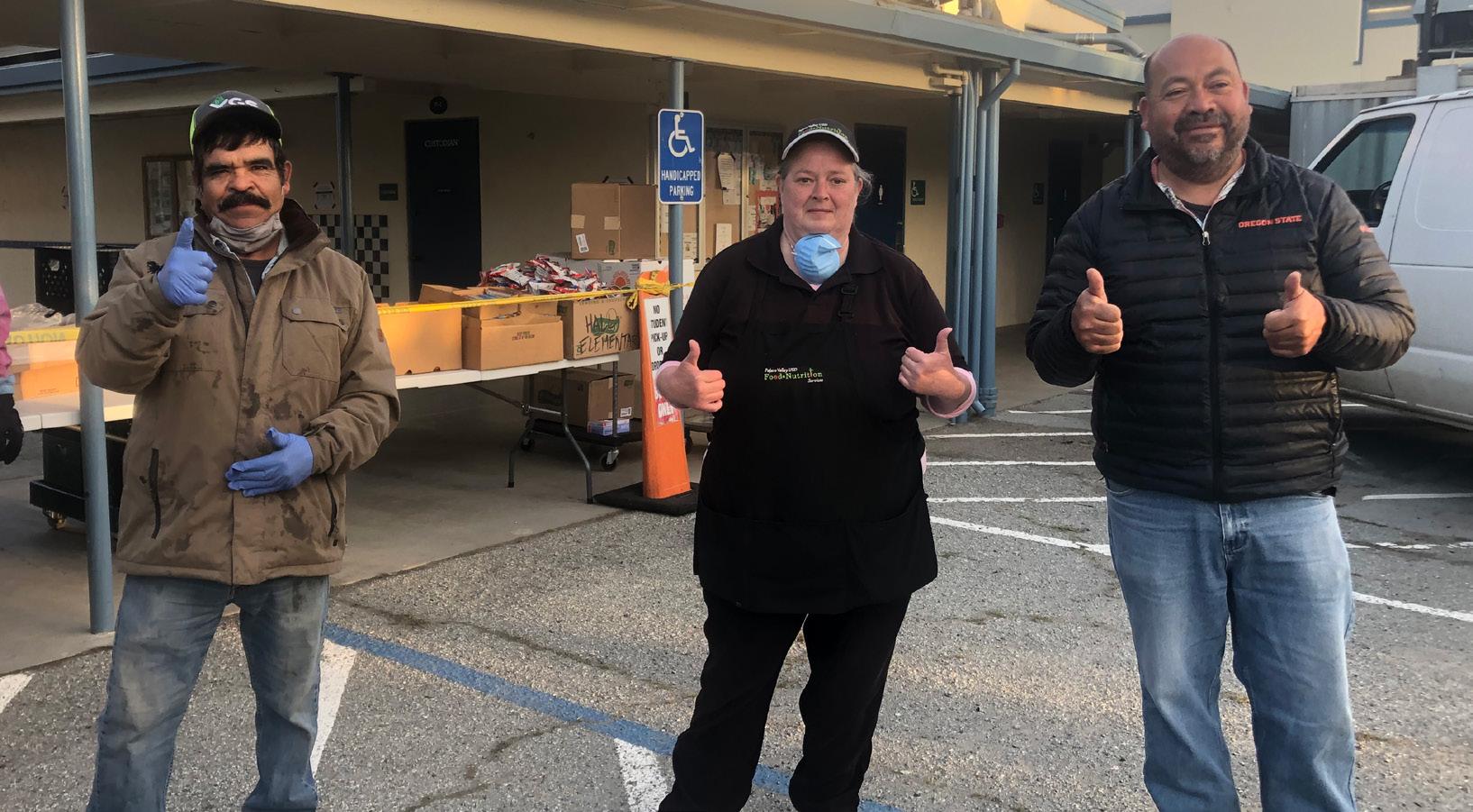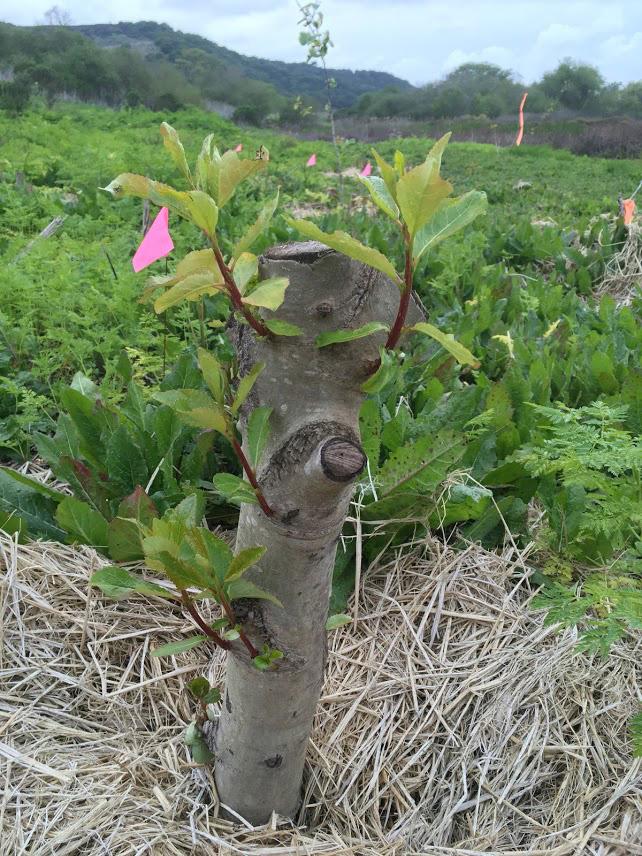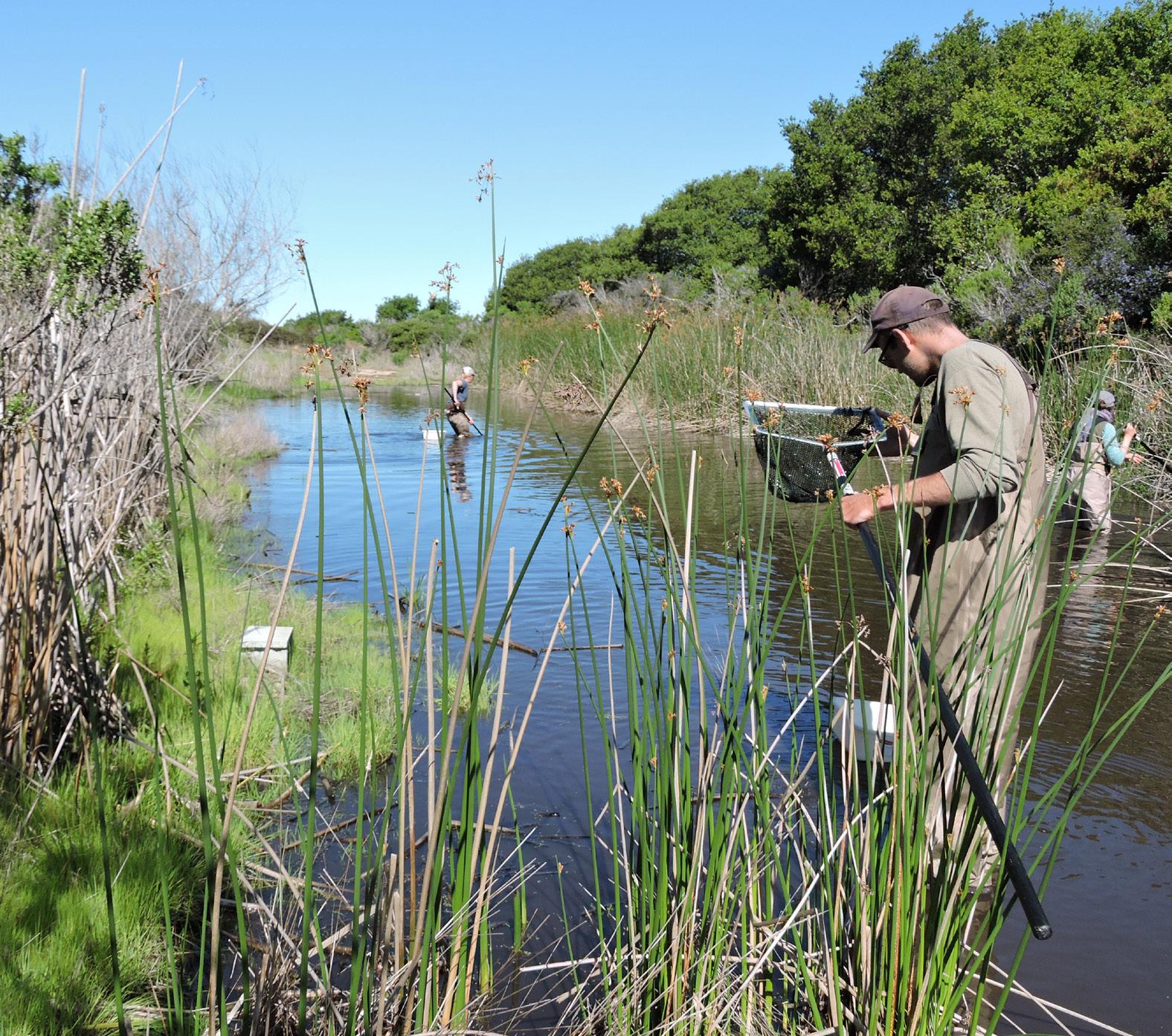Taking advantage of early rains, the team planted 1-3 stakes in 300 holes, approximately meter-deep in the upper banks of the Carneros Creek floodplain. Ken is happy to report he has seen explosive growth. Planting 1,000 trees is a longterm process that requires planning, preparation, and follow-through. Yet the results promise to be lasting and worthwhile. You can help us plant 1,000 trees (and more) with your gift to support the land-saving work of the Elkhorn Slough Foundation. You can also sign up for email updates through Slough Buzz, to receive news about our conservation efforts, community plantings, and volunteer opportunities in the Elkhorn Slough watershed. n
Listen up Quiet your mind and tune
your ears to the songs and calls of our resident and migratory birds.
Hit the books Take advantage of
time at home to study field guides and birding websites.
Enjoy! Whether watching your
backyard bird feeder or the open skies, stay curious, awaken your sense of wonder, and have fun birding!
Early Bird tours to spend time with family and travel to birding hotspots, among other pursuits. Rick is also finding ways to enjoy birding in a time of “social distance.” Rick remains an active Reserve docent and Foundation volunteer, and we are deeply grateful for his dedication and commitment to birding and the Elkhorn Slough. We wish him happy birding, and hope he will always regard himself as we do — an esteemed member of the Elkhorn Slough family. n
Farmers Jesus Calvillo (left) and Javier Zamora (right) deliver organic produce grown on ESF-protected lands to Hall School Food Service Coordinator Connie Norris for a program that feeds 500 people two meals daily
SLOUGH VIEW
Healthy Lands, Helping Hands Mark Silberstein, ESF Executive Director
We’ve been wondering how to connect the work we do to the crisis at hand. I firmly believe that our work is slow-motion health care. Without healthy environments, we know our earth tenure will be shortened. At the same time, during a pandemic, we depend on fast-motion health care for our survival and the survival and health of global human communities. I was approached by a donor who asked if we could link these elements. Thinking globally, acting locally. He put up $5,000 and challenged us to double that. We thought about the farmers working on lands protected by our efforts who were impacted by reduction in demand for crops. We also thought about the kids from Hall School in Las Lomas, who no longer were able to visit the land across from their school and gather under the spreading oak that shades ESF’s Carneros Creek Outdoor Classroom. We thought about their families impacted by the sudden loss of jobs and income. Las Lomas is designated a “Disadvantaged Community” and has many low-income and vulnerable families. The link is Hall District Elementary School, a hub for families with school-age children. We have partnered with two of the farmers who cultivate protected land just across the road from the school. We’ve used the contributed funds to buy fresh organic produce from the farmers who deliver it to the school where it is distributed with the meals. Since mid-March, the program has provided two meals, five days a week to about 500 people at Hall District Elementary. Protecting fields, farms, natural lands, waterways and groundwater is health care. Delivering healthy food to the families of the students we have bonded with is a good link between the slow-motion version of our work and the real-time needs right now. n tidal exchange
n
7






